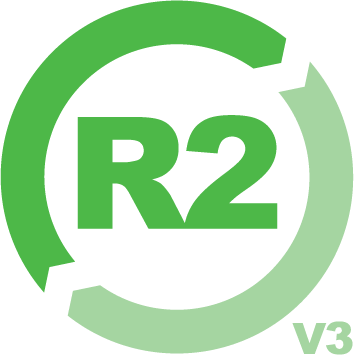Understanding end of life (EOL) and end of service life (EOSL) for data center hardware is crucial for IT professionals responsible for managing this type of equipment. After all, once a product reaches EOL or EOSL, support and updates from the manufacturer will no longer be available – which could leave your organization vulnerable to security threats and other risks. In this blog post, we’ll take a closer look at what these terms mean and how you can plan ahead to ensure your data center hardware doesn’t reach its end of life without a replacement plan in place.
Defining EOL and EOSL Data Center Hardware
End of Life (EOL) and End of Service Life (EOSL) might sound similar, and some people may use them interchangeably, but there are some important differences between the two concepts that every IT pro should understand. EOL and EOSL are milestones that signify the end of a data center hardware’s usefulness. EOL marks the termination of production or marketing because the item is no longer in demand, while EOSL denotes the date when manufacturers cease offering service contracts for the item. This includes repairs and technical support from the original vendor or company.
At the time of EOL, users are still able to derive some value from their hardware; however, manufacturers no longer provide any type of support or hardware maintenance for it. As such, customers must find alternative sources for support such as third-party maintenance vendors with prior experience servicing similar items. It is also important to be aware that certain components may need to be replaced periodically as they reach their maximum lifespan even after their initial EOL announcement.
When planning for an upgrade or replacement of data center hardware, it is important to consider both the EOL and EOSL dates. EOSL indicates when a manufacturer will officially discontinue service contracts for a given item, so customers should take this into consideration when choosing hardware and expected lifespans. Knowing these milestone dates can help IT teams better prepare for any changes or transitions that may occur due to end-of-life hardware issues down the road.
Additionally, having an understanding of product lifecycles can help inform purchasing decisions by ensuring that you select items with suitable warranty coverage before their expected dates of expiration. This way IT professionals can guarantee maximum uptime and avoid costly outages due to aging equipment regardless of how soon its associated EOL/EOSL announcement arrives.
The difference between EOL and EOSL
Understanding the distinction between End of Life (EOL) and End of Support Life (EOSL) is essential for any business that choosing IT products. EOL marks the end of a product’s useful life when it is no longer provided with updates or other forms of support. It is a point at which development on a product stops completely, making it difficult to use without some kind of workaround. On the other hand, EOSL marks the end of all support options for a product, including paid support and troubleshooting services.
While not as limiting as reaching EOL on a product, many businesses chose to upgrade before their product reaches EOSL in order to ensure secure operations. Other options include third-party maintenance services that can extend the life of your legacy hardware and avoid a potentially costly refresh. Both EOL and EOSL are important milestones in the life cycle of any IT item and should be carefully monitored in order to ensure good decision-making from an organizational standpoint.
How to plan for EOL and EOSL in your data center
Planning for end-of-life (EOL) and end-of-service-life (EOSL) in a data center can be a difficult and time-consuming process. Most organizations don’t understand the magnitude of the risk that is involved in not actively monitoring their hardware. It’s essential to stay updated on when manufacturer, vendor, and third-party systems EOL or EOSL, as well as know how soon any new replacement systems will become available.
To create an effective plan, organizations should consider predictive measures such as internally creating knowledge-based solutions, developing relationships with industry contacts or vendors who have access to up-to-date inventory lists, or even formulating a script that verifies asset lifecycle information. These measures can assist in both long-term decisions and future maintenance planning.
Tips for managing hardware at end of life
As hardware equipment nears its end of life, managing this hardware responsibly becomes more critical. End-of-life management is a key component to consider throughout the life cycle of any hardware you have. Planning ahead will help to make sure your equipment is handled appropriately when it reaches the end of its lifecycle and can even help to maximize its value. Regular maintenance is also crucial – start doing routine checkups and repairs at least four months before you expect the device to expire.
Additionally, considering alternative options such as buying pre-owned hardware or leasing new equipment instead of buying can help reduce costs in the long run. Finally, look for ways to recycle and upcycle your hardware once it reaches its end of life. By being aware of all your options from day one, you’ll be better prepared for handling old equipment responsibly when that time comes.
Takeaway
At some point, every hardware component in your data center will reach the end of its operational life (EOL) or end-of-sale lifecycle (EOSL). By understanding the difference between EOL and EOSL—and planning accordingly—you can avoid disruptions to your business and ensure a smooth transition when it’s time to upgrade your hardware.
With careful management, you can also maximize the value of your existing assets and get the most out of your data center investment. Whether you need help extending the life of your servers, storage, or networking devices, ReluTech has certified engineers who can maintain any piece of data center hardware made by any of the major manufacturers with the same level of service. If you want to learn more about ReluTech’s third-party maintenance services, request a quote, or contact us today. Our team would be happy to chat with you about how we can help manage your data center assets at all stages of their lifecycle.

ABOUT THE AUTHOR | JASON FIGLIOLINI
Jason Figliolini is our Marketing Content Manager here at ReluTech. His top priorities are content creation for articles, blogs, and collateral to educate customers about cloud, hardware, and maintenance solutions. Outside of work, he enjoys reading books, attending concerts, and exploring Atlanta’s hidden gems.
Get in touch with Jason: jfigliolini@relutech.com
